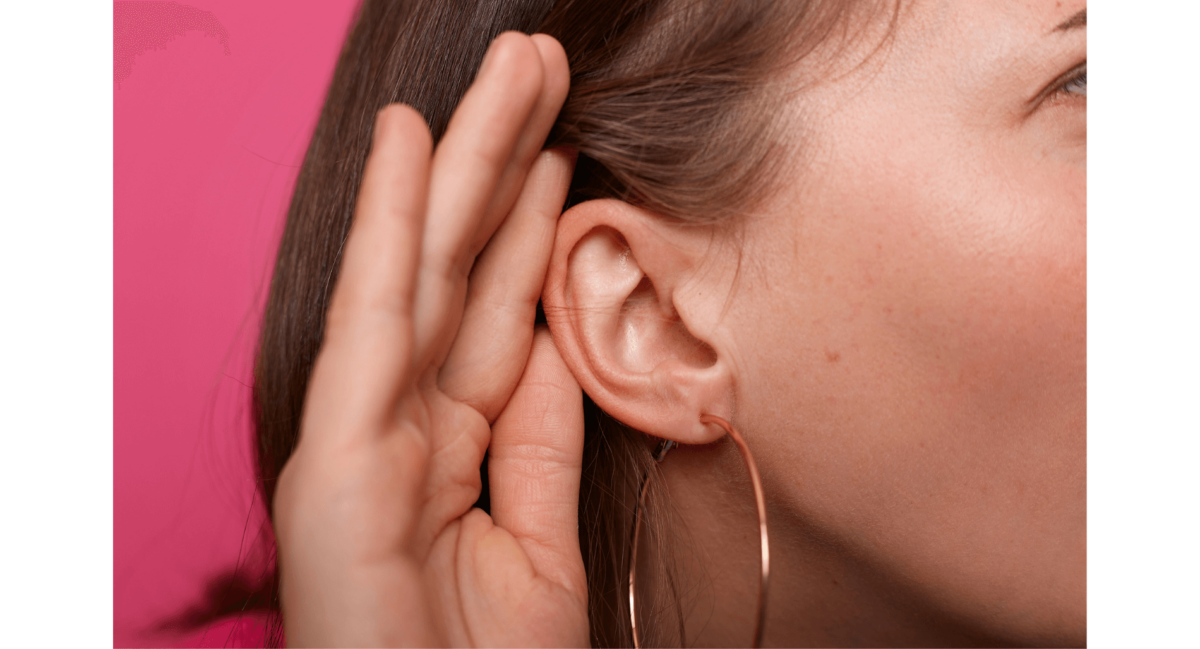- How Treating Hearing Loss Prevents Falls and Accidents - August 16, 2025
- Managing Tinnitus During Summer - August 5, 2025
- Tips for Choosing the Right Hearing Aid - July 30, 2025
Do you know about the different types of hearing loss? There are three common kinds of hearing loss; sensorineural hearing loss, conductive hearing loss, and mixed hearing loss. This guide will help you learn more about conductive hearing loss, exploring its causes and treatment options.
Understanding Conductive Hearing Loss
Conductive hearing loss occurs when sound waves are obstructed or impeded from reaching the inner ear. Unlike sensorineural hearing loss, which involves damage to the inner ear or auditory nerve, conductive hearing loss involves issues in the outer or middle ear. This can result in reduced sound volume or difficulty hearing faint sounds.
Common Causes of Conductive Hearing Loss:
Some of the causes of conductive hearing loss include:
- Earwax Buildup: One of the most common and easily treatable causes of conductive hearing loss is the buildup of earwax (cerumen). When earwax accumulates and hardens in the ear canal, it can impede the passage of sound waves, leading to temporary hearing loss.
- Fluid in the Middle Ear (Otitis Media): Conditions such as otitis media involve the accumulation of fluid in the middle ear, often due to infections or allergies. This fluid impedes the movement of the middle ear bones (ossicles), leading to hearing loss.
- Perforated Eardrum: A tear or hole in the eardrum can occur due to infections, trauma, or changes in air pressure. A perforated eardrum can disrupt the normal transmission of sound, causing conductive hearing loss.
- Malformation of the Ear: Congenital abnormalities or malformations of the outer or middle ear can contribute to conductive hearing loss. These structural issues may interfere with the proper transmission of sound.
- Otosclerosis: Otosclerosis is a condition characterized by abnormal bone growth in the middle ear. This can immobilize the stapes bone, affecting its ability to transmit sound waves to the inner ear.
- Foreign Objects: The presence of foreign objects in the ear canal, such as small toys or insects, can obstruct the passage of sound and lead to conductive hearing loss.
Diagnostic Approaches for Conductive Hearing Loss
Diagnosing conductive hearing loss involves a comprehensive evaluation by a hearing health specialist. The following diagnostic approaches may be used:
- Physical Exam: A thorough exam of the ear canal, eardrum, and surrounding structures to identify any visible abnormalities or obstructions.
- Audiometry: Hearing tests, including pure-tone audiometry and tympanometry, to assess the degree and type of hearing loss and identify its probable causes.
- Imaging Studies: In certain cases, imaging studies such as CT scans or MRIs may be conducted to visualize the structures of the ear and identify any structural abnormalities.
Treatments for Conductive Hearing Loss
- Earwax Removal: If earwax buildup is the cause of hearing loss, having a hearing health specialist remove the earwax can often restore normal hearing. This may involve irrigation, suction, or ear drops.
- Medical Management: In cases of ear infections or fluid buildup, medical treatment such as antibiotics or antifungal medications may be prescribed to address the underlying cause.
- Surgery: Surgical interventions may be recommended for certain conditions. Procedures such as myringoplasty or tympanoplasty can repair a perforated eardrum, while stapedectomy may be performed for otosclerosis.
- Hearing Aids: For cases where surgical intervention is not feasible or necessary, hearing aids can be an effective solution. They amplify sounds, compensating for the reduction in volume caused by conductive hearing loss.
- Bone-Anchored Hearing Systems: In some instances, where the outer or middle ear is not functioning optimally, bone-anchored hearing systems can be implanted to transmit sound vibrations directly to the inner ear through bone conduction.
- Treatment of Underlying Conditions: Addressing the underlying causes, such as allergies or chronic infections, is crucial for managing conductive hearing loss in the long term.
What To Expect After Treatment
The prognosis for conductive hearing loss depends on the underlying cause of the hearing loss, and how quickly you were able to seek treatment. In many cases, addressing the root cause can lead to significant improvement or restore hearing. Timely medical attention and a comprehensive treatment approach can ensure positive outcomes for individuals experiencing conductive hearing loss.
Schedule Your Comprehensive Hearing Assessment
If you or a loved one is grappling with symptoms of conductive hearing loss, it’s essential to seek professional evaluation and guidance. Schedule a comprehensive hearing assessment with our experienced specialists to explore personalized treatment options and support.

